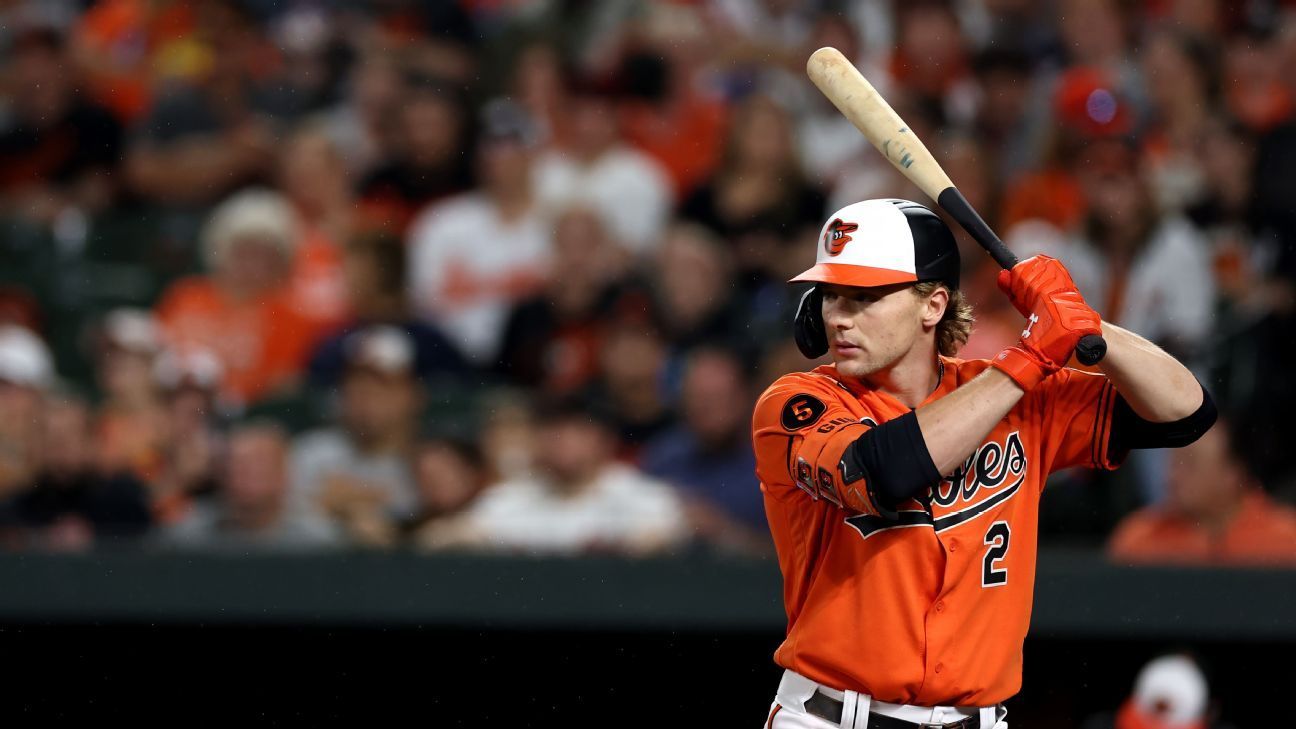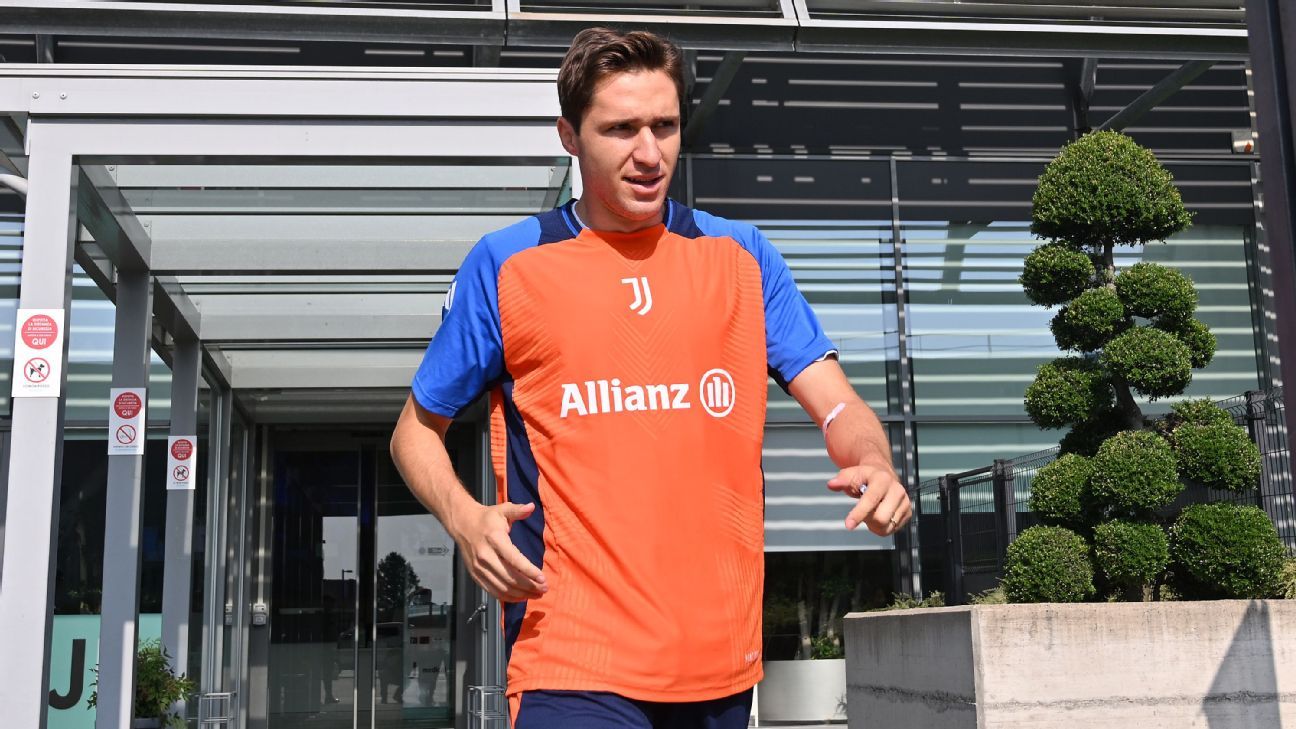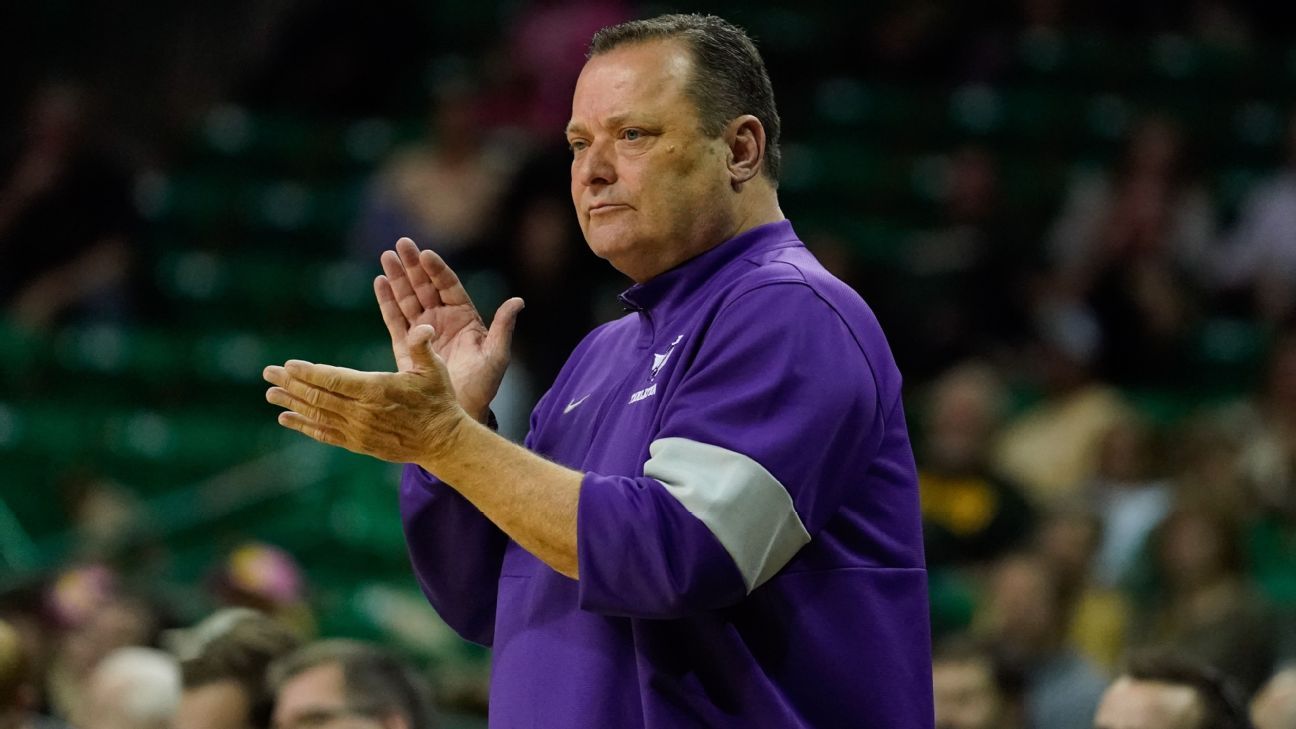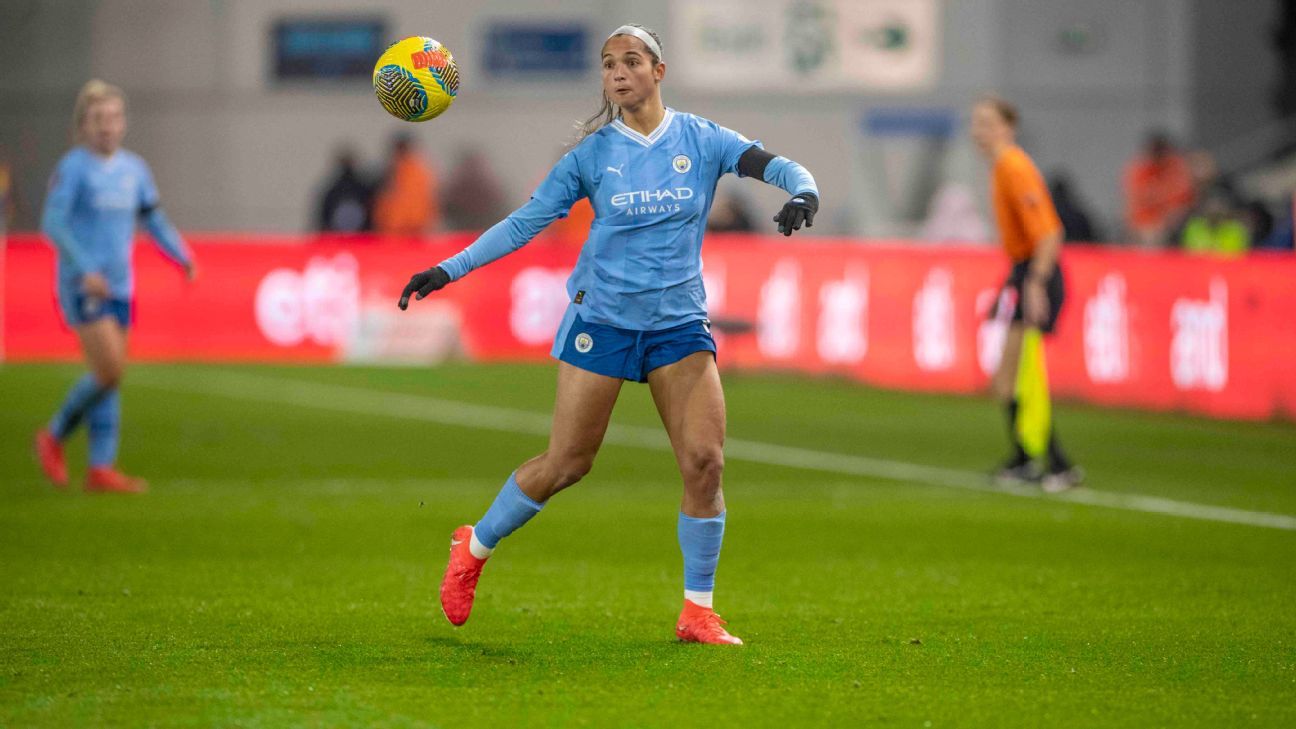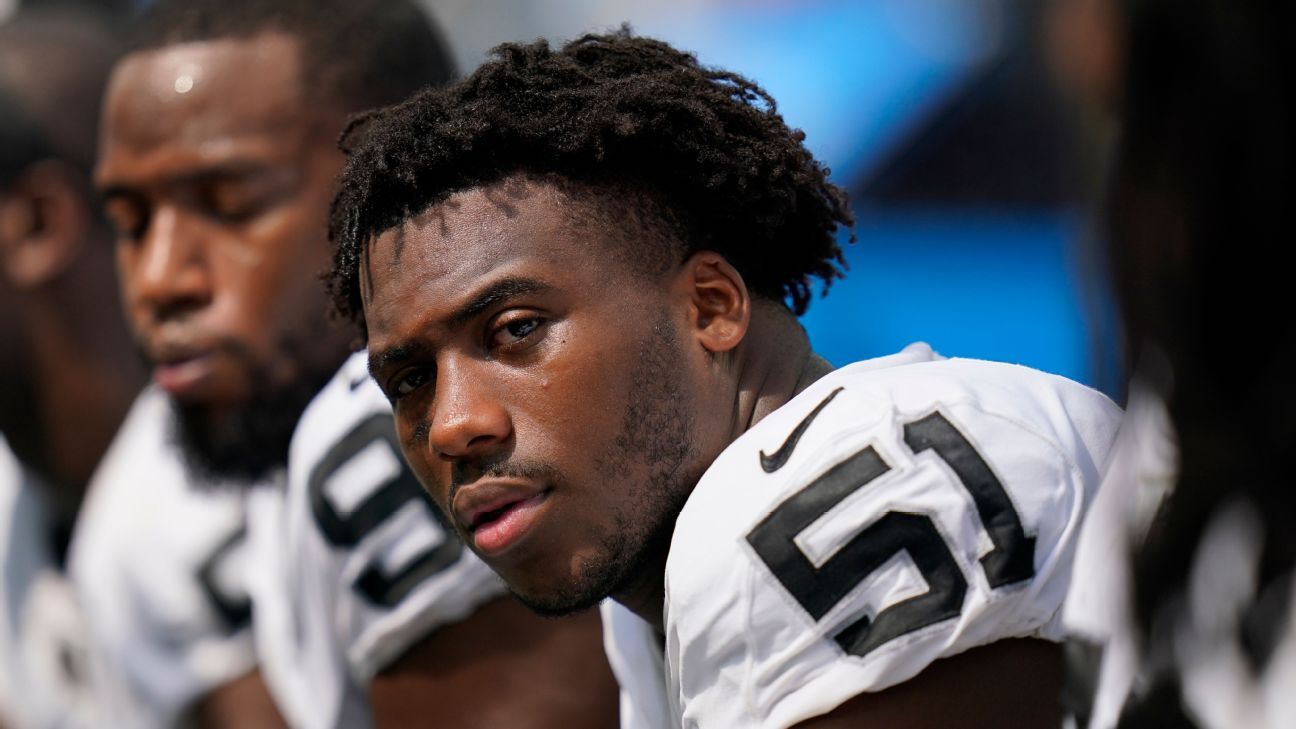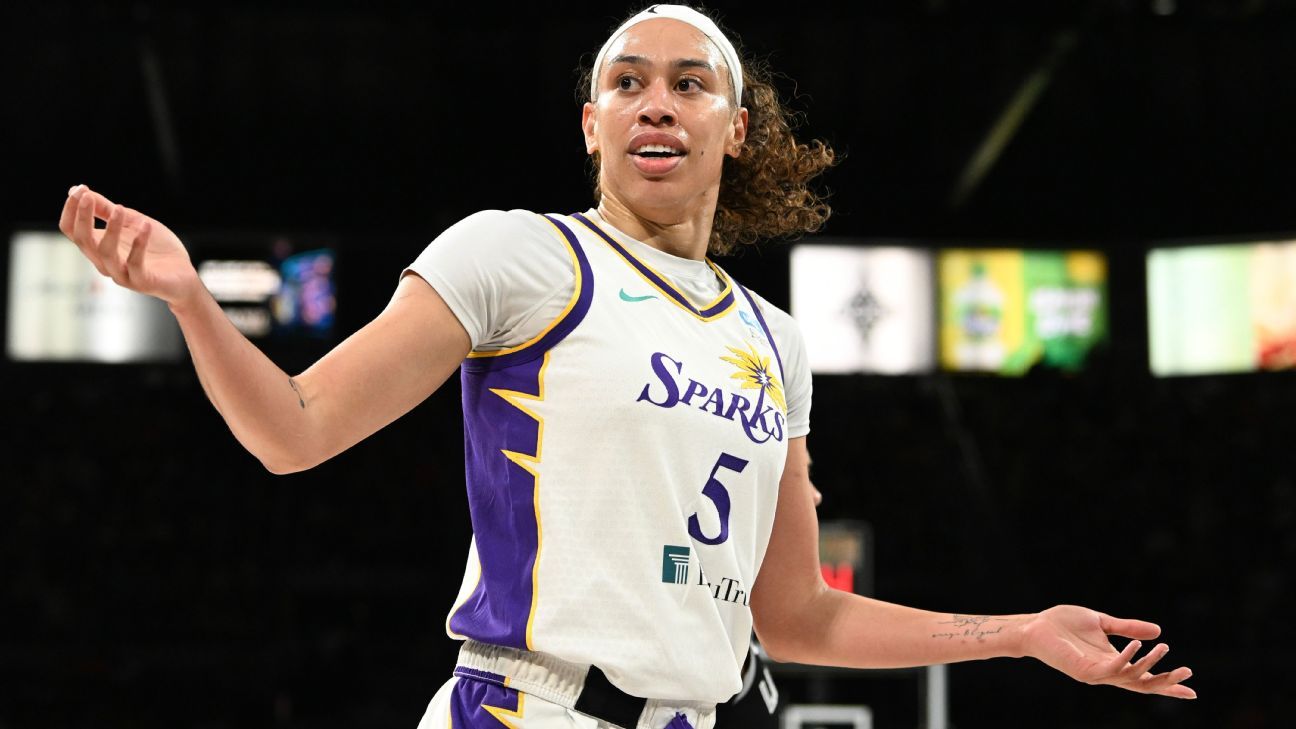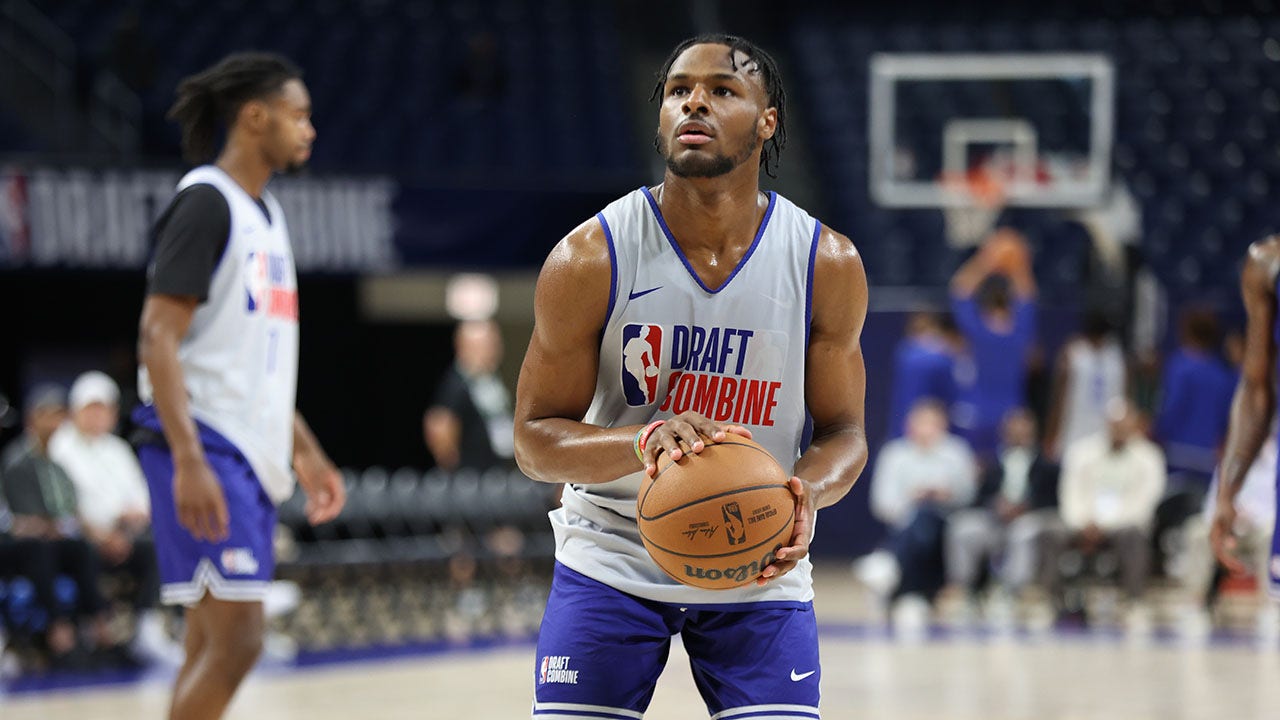A front-office executive recently pulled out a video from Gunnar Henderson's high school days in Alabama and showed it to a colleague who didn't view Henderson as an amateur.
“Oh my God,” the colleague said, stunned by what he saw.
Henderson, a first-time All-Star starter, is 23 and already considered one of the best in the majors. Just five years after Henderson was drafted by the Baltimore Orioles — and a little more than a year after he was promoted to the majors — he is excelling at just about everything.
He has become a model of what a scout would expect from a player: big and physical, at 6-foot-3 and 220 pounds, but also fast and powerful. Given the force of what he does at the plate, he appears to be swinging a sledgehammer more than a bat, and when he rounds the bases, he has explosiveness; Henderson moves like an NFL safety about to tackle a wide receiver.
Only Aaron Judge and Shohei Ohtani have hit more home runs this season, and Henderson is already regarded as one of the game's best defensive shortstops and baserunners. When a staffer recently asked Orioles catcher Adley Rutschman about Henderson's early career dominance, Rutschman turned around and said, “It's his world now. And we just live in it.”
Considering his impressive athleticism, exceptional reputation for work, and low-key personality, it's easy to understand why several teams have been asking one really simple, yet important question: How did this baseball prodigy fall all the way to the 42nd overall pick in the draft?
The baseball draft is an inexact science in which teams make their best guesses, hoping that their scouting reports, draft principles, data and projection systems will result in good picks. But there are so many variables at play that mistakes are inevitably made, leaving club employees to wonder, through informal reviews: What did we not see in that player? Here’s what happened after Mike Trout fell to the 25th pick in the 2009 draft, when many teams focused on Trout’s weak competition in southern New Jersey rather than his unusual athleticism; three years after those clubs stopped recruiting Trout, he was considered the best player in baseball.
Henderson smiled slightly over the weekend when asked how he thought he ended up with the 42nd pick in the draft. “I could understand why, just because I'm from a small town,” he said.
Henderson attended Morgan Academy in Selma, Alabama, a small town of 17,000 people in the central part of the state. “It's not the biggest competition in high school baseball. I understand that aspect. … Knowing the mentality that I have, I feel like I'm a hard worker and I try to be the best player I can be day in and day out. That's what sets me apart.”
According to interviews and texts with evaluators around the baseball world, the answer behind Henderson’s downfall is likely contained in that video shared by team officials. In 2019, teams were concerned about what Henderson would do as a hitter and were unsure how he would develop as an athlete. Colton Cowser, a close friend of the Orioles shortstop, said he had recently watched video of Henderson as a high school player. “He doesn’t look like he does now,” Cowser said.
I asked people around the baseball world: Why did Gunnar Henderson fall to No. 42 overall? And this was an example from his high school career that made one official say, “Oh, my God.” image.twitter.com/aObSObpyuw
—Buster Olney (@Buster_ESPN) July 3, 2024
In particular, Henderson’s swing has improved. Henderson’s swing in high school is what made the National League team official exclaim, “Oh, my God.” Another evaluator said, “It was pretty bad.” In high school, the evaluator said, Henderson was hunched over at the plate and the motion through his swing was far from smooth. It was something of a Kirk Gibson swing, the evaluator said, mentioning the former MVP and football player who seemed to stagger toward the ball from a slightly crouched position, as if he were swinging a wiffle ball bat, with the motion of his hands not really connecting with his legs.
That worked out well for Gibson, but not for Henderson, in the eyes of several evaluators. “There were a lot of swing errors,” said another evaluator, from an American League team. “We weren't sure how the bat was going to work. We had him close to where the Orioles had him, maybe lower, maybe late second round, third round. There was a lot of volatility in his offensive performance.”
Another evaluator: “We had him at the end of the third round. We weren't sure if he was going to hit. He was pretty tough.”
Henderson had also played against a lower level of competition, leaving teams to wonder how he would develop when he faced better players in professional baseball. And while he was a superior athlete in high school, one opposing evaluator said, it wasn’t entirely clear how he would develop as he matured into an adult. Would the added weight slow his velocity? Given the flawed nature of his swing, would his increased strength necessarily translate to power? Some teams seriously doubted whether he could remain at shortstop.
Henderson said he was told before he declared for the draft to expect the worst, “because draft night is a beast in itself.” A couple of teams that had told Henderson they wanted him passed on the opportunity, and he began to get used to the idea that he was going to college, to Auburn.
The Orioles had the first pick in the second round, but Henderson had had no contact with them before the draft — “none at all,” he recalled. He had no expectation that Baltimore would select him, but there was still optimism within his family: Baltimore was the favorite team of Gunnar’s 12-year-old brother, Cade, who would wear Orioles pajamas to bed, hoping they would select his brother.
Cade got his wish, and now some of the same rival executive officers who saw Henderson fall to the 42nd pick in 2019 say that if they knew then what they know now and there was a remake of that draft, Henderson would be considered the better player overall. “Adley is great, but if you look at the tendencies of teams to draft shortstops, Gunnar would probably be 1-1 for the 2019 draft,” he said. [a lot of scouts]”one official said. “Either him or Bobby Witt. I mean, it was a great draft.” (The Kansas City Royals shortstop was selected second overall, after Rutschman.)
Since then, in the eyes of those opposing evaluators, Baltimore has clearly done a great job with Henderson in remaking his swing. As Henderson has aged and gained weight, he has gotten faster, as well as stronger, with bursts of quickness and power in what he does. Brandon Hyde, the Orioles manager, recalled a play in which Henderson slid into the shortstop gap to catch a ground ball before leaping into the air, Derek Jeter-like, and making a throw to first base for an out.
“What was that about?” Hyde asked Henderson when he returned to the dugout. As Henderson often does, he ignored the conversation (the compliment) because of his own high expectations.
That play? The dazzling home runs? The scramble for an extra base? No big deal. All along, it seemed, Gunnar Henderson expected more of himself than others saw in him.

